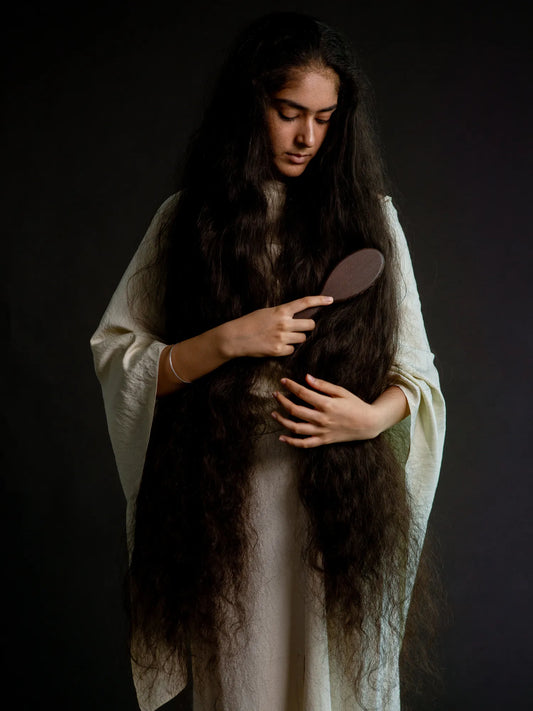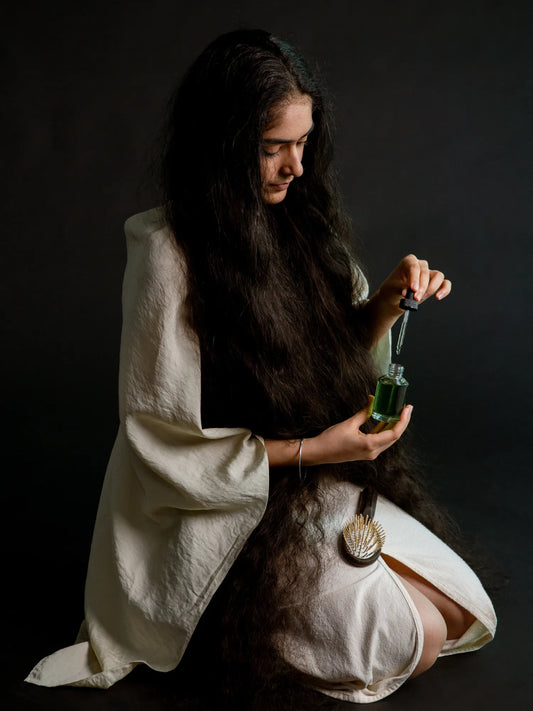
In Japan, the word for comb — kushibi — translates to "working with spirits," reflecting the ancient belief that combing the hair was a sacred ritual, gathering the spiritual energy held within each strand.
"In ancient Japan, the simple act of combing one’s hair was a sacred ritual — a way to honor the spirit within."
Combs have long been seen as deeply personal objects, and in some traditions, even as spiritual tools.
Our fascination with this deep-rooted symbolism and the intricate craftsmanship behind traditional combs led us to introduce the works of Jusan-Ya to our shop. During a visit to Kyoto, we had the opportunity to dive deeper into the history and heritage of this remarkable family-run brand. What we found was a rich and intricate world of Japanese comb-making tradition. Here’s a closer look at why Jusan-Ya combs are considered the finest in Japan.

Photos by Yasuhide Kuge, via Brutus Casa. (2012. Extra Issue). Magazine House Mook
One of the most fascinating aspects we discovered was the traditional comb-making techniques that Jusan-Ya still practices — methods that trace back to the Nara period (8th century). Staying true to these centuries-old traditions, every comb is crafted from boxwood that Jusan-Ya prepares entirely in-house. They are one of the few remaining workshops in Japan that oversee every step of production — from cultivating the trees to hand-polishing each individual tooth.
The Journey of Boxwood: A Forty-Year Story
Over the course of three decades, grows into the dense, fine-grained boxwood tree. Unlike faster-growing species, boxwood develops at a deliberate pace, forming a wood that is incredibly strong, yet supple enough to carve with precision.
It takes 30 years or more for a single tree to reach the maturity needed for our combs. The natural environment, weather patterns, and slow turning of the seasons all imprint themselves on the character of the wood.
Once harvested, the wood’s journey is far from over. Rather than rushing to shape it, artisans allow the boxwood to air-dry naturally for 10 additional years. This slow drying process ensures the wood stabilises fully, preventing warping or cracking, and deepening its mellow golden hue.
Only after these 40 patient years can the crafting begin.

Combing the hair was not merely an act of grooming, but a sacred ritual. Boxwood combs were used to gently smooth and purify the hair, helping to gather and calm the spiritual energy it held. The very word for comb in Japanese, kushi (櫛), contains characters that relate to divine or spiritual work, hinting at the deep, ancestral ties between hair care and spiritual well-being.
Women, in particular, would comb their long black hair in quiet moments of reflection, believing the act helped maintain emotional balance, ward off negative spirits, and strengthen their connection to nature and the divine. Hair was often grown long and tended carefully as a symbol of purity, health, and spiritual strength.
This reverence for hair shaped many of Japan’s cultural traditions — from the solemn rituals of Shinto priestesses to the intricate grooming practices of the geisha and samurai. Even today, echoes of this belief remain in the slow, mindful rituals of traditional hair care, where tools like handcrafted boxwood combs continue to honor the sacred connection between body, spirit, and nature.
















